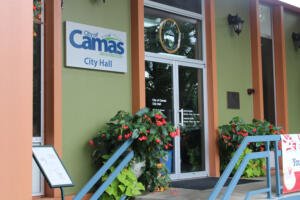The city of Camas kicked off its 2025-26 budget process this month with a bit of bad news: while the City’s general fund expenses have increased by $12.9 million in the four-year span between 2021 and 2025, the City’s general fund revenues did not keep pace, increasing by $5 million over the same time period.
Cathy Huber Nickerson, the City’s finance director, told Camas City Council members earlier this month, during the Council’s Aug. 5 workshop, that the City has also experienced decreases in some of its general fund revenues since 2021, including $78,000 less in sales taxes and $466,350 less from other tax revenues.
The revenue increases included $2.3 million in charges for services; $1.9 million in property taxes; $645,735 from permits and licenses; $245,626 from miscellaneous revenues; and 626,732 in 2024 from utility taxes, including the City’s new, two-year 2% utility tax on its water, stormwater, sewer and solid waste utilities, which is set to expire at the end of this year.
The City’s general fund expense increases since 2021 have included $2.98 million for salary increases; $2.44 million for new staff positions; $2.15 for Camas’ contributions to the Camas-Washougal Fire Department; $1.68 million for streets; $1 million for employee benefit cost increases; $400,000 for the police body-worn cameras and other police services; $495,000 for the City’s new enterprise resource planning (ERP) software system; $292,000 for library repairs; $241,000 for parks contracts; $274,000 for parks maintenance services; $252,000 for library services; and $176,000 for information technology (IT) services.
Huber Nickerson reiterated that Camas, with its new utility tax, now has a “three-legged stool” revenue model, collecting money for its general fund — which funds the bulk of the City’s services, including fire and rescue, police, streets, parks and recreation, and library services.





